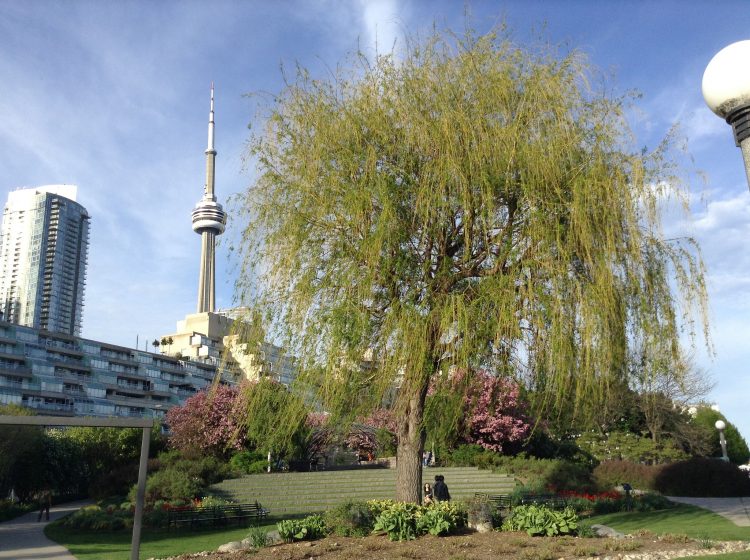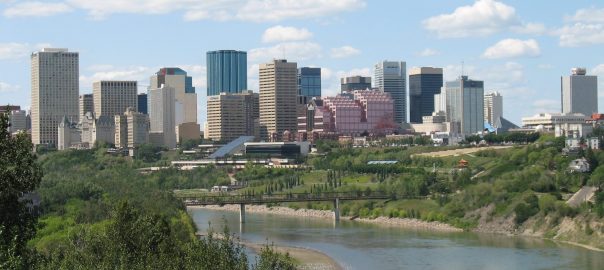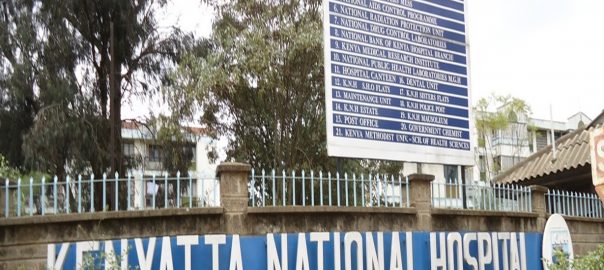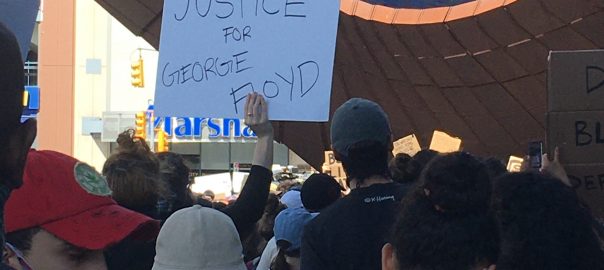To move towards more sustainable and resilient cities, it is essential that we connect urban ecology researchers and practitioners to find and implement solutions to urban environmental issues. The question, though, is how to do this?
Cities are increasingly understood as mosaics of grey, green, and blue infrastructure that interact in complex ways to affect the wellbeing of urban residents (Ahern 2007, Svendsen and Northridge 2012). In particular, green and blue infrastructure provides important benefits to urban residents (Lovell and Taylor 2013) such as flood protection by urban wetlands and forests (Lennon et al. 2014), improved mental health from greener streets and park visitation (Bragg and Atkins 2016, Shanahan et al. 2016), and food production from community gardens (Russo et al. 2017). This ecological infrastructure also supports key wildlife populations in urban areas (Hough et al. 2004). However, with this new view of cities comes a key challenge: how to integrate specialized knowledge and ecologically-sound management practices into urban planning in order to maintain natural areas and promote urban ecosystem services.

Just as grey infrastructure can falter without proper care and maintenance, green and blue infrastructure—and the benefits it provides—can break down if urban ecosystems are not properly managed. Improper selection of street trees can lead to increased allergen exposure or property damage (Roy et al. 2012), failure to effectively manage forested areas in or near cities can lead to infrastructure damage when wildfires occur (Calkin et al. 2014), and unfamiliarity with animal movement corridors can lead to car accidents and loss of both animal and human life (Malo et al. 2004). Added complexities include understanding the social aspects of the workers who are maintaining urban green and blue infrastructure (Bardekjian 2016), as well as navigating the values and preferences of the multicultural communities that make up today’s cities (Wilkerson et al. 2018).
Managing urban ecosystems is not simple; it requires understanding of both the ecology of these ecosystems—how living organisms relate and interact with each other and their surroundings (Lepczyk et al. 2017), and the socioecology of cities—how human, built, green and blue infrastructure, ecosystems, and social-economic systems interact across urban areas (Andersson et al. 2014). In other words, decision-making must draw on and effectively integrate urban ecology and urban planning/management knowledge (Aronson et al. 2017, Groffman et al. 2017).
In order to move towards more sustainable Canadian cities, our municipal governments need to adopt a collaborative systems approach, where conversation and cooperation among urban planners, managers, arborists, landscape architects and ecologists is the norm rather than the exception.
Canada and the integration of urban ecology and planning
Eighty percent of Canadians that live in cities are directly affected when urban temperatures increase, urbanization leads to flooding, or species shifts lead to human-wildlife conflict in cities. Urban ecology focuses on topics that have direct implications for the ecosystem services that contribute to human wellbeing in urban areas (Ziter 2016) and thus can provide valuable information about how to manage the places where most Canadians live. However, despite the rapid increase in attention to urban ecology around the world (Mayer 2010, McDonald 2016), there has historically been relatively little focus on urban ecosystems among the Canadian ecological community compared to other regions (e.g., Europe, US, Australia). Rather, there has been an emphasis on ecology in “natural” areas, or production systems (e.g. forestry, agriculture), which cities don’t readily fit into. For example, an urban ecology session has been only been part of the two most recent (i.e. 2017, 2018) annual conferences of the Canadian Society for Ecology and Evolution, despite the organization’s 13 year history. If Canadians want to build sustainable cities where green and blue infrastructure is effectively managed, urban ecology research that can inform—and is informed by—urban planning needs to be accelerated, supported, and valued.

Furthermore—or perhaps consequently—urban planning and ecology research in Canada (as often occurs elsewhere) currently operate too often in parallel, rather than cooperatively. Several key challenges to effective collaboration exist in cities. Academics and city staff may have different goals, unequal understanding of the concerns of urban residents, and thus ask different types of questions. Planners and decision-makers must operate within the constraints of economic systems and budgets that are often unfamiliar to academic ecologists. Different professions often speak different “disciplinary languages” that must be bridged. Early career researchers (e.g. students, postdocs) may be new to a region or on a short term contract, and thus lack the time or connections to build the relationships necessary for co-produced work. And academic incentive structures may not sufficiently support or encourage collaboration of this type. In Canada, it is a particular challenge that federal agencies explicitly separate funding for natural science (NSERC), social science (SSHRC), and health research (CIHR). This means there is limited support for research that explores complex urban socio-ecological systems (Conway 2018).
Increasing awareness of urban ecology in Canada, however, offers an opportunity to ensure that urban ecologists work together with Canadian urban planners/decision-makers to produce rigorous and practical solutions for Canada’s cities. Development of a national culture emphasizing collaborations among urban ecology researchers and practitioners will have two primary benefits. One, it will ensure that ecologists engage in research that can be meaningfully applied to urban management challenges. Two, municipal planners will more rapidly gain the knowledge they need to effectively design and manage green and blue infrastructure in cities. To move towards more sustainable and resilient cities, it is essential that we connect Canadian urban ecology researchers and practitioners to find and implement solutions to urban environmental issues.
The question though, is how to best do this?
Fortunately, we can look towards a number of Canadian case studies as examples of urban ecology initiatives that successfully transcend disciplinary boundaries and overcome some of the above challenges to connect ecologists and planners for the benefit of Canadian cities and their residents. The following three examples (contributed by participants of the Canadian Society for Ecology and Evolution’s inaugural urban ecology symposium in 2017) demonstrate the benefits of building partnerships between researchers and practitioners, connecting ecological knowledge to people, and speaking the language of urban governments.
Case Study 1: Managing urban invasive species
The District of North Saanich, British Columbia, increasingly has to deal with invasive species that threaten parks and natural areas. For example, recent invasion by Carpet Burweed (Soliva sessilis) has reduced the use and enjoyment of public spaces for recreation. However, dealing with invasive species can be extremely expensive, and can be controversial since some people like problematic species (e.g. Himalayan blackberry (Rubus armeniacus) for its fruit). Faced with difficult decisions around invasive removal, North Saanich staff recognized the potential for ecologists to advise on best strategies. In 2012, North Saanich developed an Invasive Species Management Strategy (Manton and Schaefer 2011) that was widely successful. It provides clear direction and a coordinated approach for dealing with the invasive species, and has subsequently been a model for other locations (e.g. Kathrens et al. 2016). Integral to this success was the establishment of strong partnerships between ecologists, planners, municipal staff, and the public.

The Strategy has largely been successful because it was developed through an inclusive process that allowed it to be harmonized with other local municipal and provincial plans, policies, and legislation. The process included presentations and publication of comprehensive educational materials; facilitator-led workshops and interviews with politicians, management, operations staff, volunteers and the public; and an Open House and online survey to facilitate input from the public. This extensive consultation process introduced the public to the technical, logistic, and political issues of invasive species management. This was critical to deal with challenges such as collaboration and sharing of resources across different municipalities within the region.
The inclusive process helped inform the urban ecology contributions to the Strategy and their harmonization with the policy goals of North Saanich, and provided a valuable learning opportunity for the ecologists involved. For example, urban ecologists helped to develop “Watch Lists” to identify which species should be publicized amongst staff and the general public to report new sightings. Ecologists also guided management and removal efforts for heavily impacted public areas; prioritizing removal of species that affect important ecosystem processes (e.g. Garlic mustard) or present public health threats (e.g. Giant hogweed). Finally, ecologists worked with municipality staff to determine which species should be maintained at current levels rather than eradicated, which frees municipalities from some public pressure to undertake costly and often unfeasible complete eradication of invasive species.
Ecologists, in turn, learned how to effectively work within the political and regulatory framework familiar to urban planners and decision-makers. Guidelines integrated into the Strategy couldn’t be based solely on ecological values, but had to agree with the values and goals of several additional plans (e.g., the Saanich Park and Natural Areas Guidelines, Bylaw Policies and Legislation, and Provincial and Federal Environmental Protection Legislation, to name only a few). By virtue of substantial involvement of volunteers and community organizations in regional invasive species management and the development of the Strategy, ecologists also gained insight into community engaged approaches to science that are often outside the traditional academic repertoire. Taking adequate time to ensure that all involved groups were “speaking the same language” was a key component of long-term success.
Since its inception, the Strategy has resulted in a strengthened working relationship between local stakeholders in the region, clear statements of the vision and goal for invasive species management in North Saanich, and a plan for optimizing municipal resources for invasive species control. This has, and continues to be, facilitated by the strong academic-municipal-public partnerships built during the creation of the Strategy.
Further Resources:
- Kathrens L, Jennings J, Schaefer VH. University of Victoria Invasive Species Management Strategy. Victoria, BC: Office of Campus Planning and Sustainability. University of Victoria; 2016. Available at: https://www.uvic.ca/sustainability/assets/docs/fund/CSF003-invasive-species-mgmt-plan.pdf
- Manton C, Schaefer VH. Invasive Species Management Strategy for Saanich. Saanich, BC: District of Saanich; 2012. Available at: http://www.saanich.ca/assets/Parks~Recreation~and~Culture/Documents/InvasiveSpeciesManagementStrategy.pdf
Case Study 2: Providing guidance for urban forest climate adaptation and design
Metro Vancouver—a federation of 21 municipalities, one Electoral Area and one Treaty First Nation that collaboratively plans for and delivers regional-scale services—has identified climate adaptation as an important piece of building and maintaining a livable region. Consequently, the region is currently incorporating climate adaptation into its policies and regulations to both conserve biodiversity and enhance quality of life.
Urban forests, including park forests and street trees, were identified as a particular policy focus due to their contribution to multiple ecosystem services and role in climate adaptation. However, practical region-specific guidance on how to plan and manage urban forests within the built environment and in a changing climate was lacking. To address this knowledge gap, an advisory panel of planners, urban foresters, and ecologists (from academia and government) worked together to develop the Urban Forest Climate Adaptation Framework and Design Guidebook based on the most recent science. This work includes a tree species selection database with 144 species to support evidence-based decision making. Multiple perspectives were critical to finalizing these recommendations. For example, the database was specifically designed to balance the practical difficulties of tree survival in harsh conditions (a frequent planning justification for planting of non-native trees) against the need to be cautious about planting invasive species (a value often held by ecologists and conservation groups). Navigating this challenge required careful consideration and discussion of the concerns and goals of different stakeholders, including negotiation of values held by different parties. Discussions ultimately resulted in a compromise among planners and ecologists, recognizing the validity of arguments on each side. This compromise involved inclusion of a strong communications strategy around invasive species built into the resultant products, and recommendations to prioritize native plantings in locations in close proximity to natural areas—but without eliminating non-native trees from the guide altogether.

The creation of the Framework and Design Guidebook demonstrates the need for interdisciplinary collaboration to develop strong, evidence-based recommendations for urban planning. Those involved in the process also highlighted the importance of identifying the unique levers and barriers for each stakeholder group to make progress, and the need to take time to appropriately tailor their messages. Planners learned to be open to the suggestions of ecologists, while ecologists in turn learned the importance of recognizing values outside of their own, and of adapting their language and messages to a new audience. The next step—and an ongoing challenge—of this project includes looking at ways to increase the ease and accessibility of this information to different end users, which will be critical to support the implementation of urban forest plans and climate adaptation strategies across the Metro Vancouver region. A promising early success has been the recent incorporation of the Framework into the University of British Columbia’s Urban Forestry Masters Program, which educates the next generation of urban foresters.
Further Resources:
- Design Guidebook: Maximizing Climate Adaptation benefits with Trees. Vancouver, BC: Diamond Head Consulting Ltd; 2016. Available at: http://www.metrovancouver.org/services/regional-planning/PlanningPublications/DesignGuidebook-MaximizingClimateAdaptationBenefitswithTrees.pdf
- Urban Forest Climate Adaptation Framework for Metro Vancouver: Tree Species Selection, Planting and Management. Vancouver, BC: Diamond Head Consulting Ltd; 2016. Available at: http://www.metrovancouver.org/services/regional-planning/PlanningPublications/UrbanForestClimateAdaptationFrameworkTreeSpeciesSelection.pdf
Case study 3: Partners in Action: A shade policy in the City of Toronto for skin cancer prevention
It is not often that medical doctors, dermatologists, urban foresters, researchers, health consultants, planners, architects, landscape architects, urban designers and municipal employees come together to address a common goal. However, the creation of Toronto’s shade policy represents a successful synergy linking ultraviolet radiation awareness and skin cancer prevention with public health, city planning, urban forestry, civic design and health promotion policy. Integrating the expertise of these diverse groups to inform policy in Canada’s most populous city demonstrates the strength of building diverse partnerships across academia, practitioners, and other stakeholders, and the importance of aligning ecological knowledge with key urban policy goals.
The provision of shade (natural, built, and mobile) is a key method of preventing skin cancer caused by environmental ultraviolet radiation. Public policy to support shade creation is thus an important component of skin cancer prevention. The Toronto Cancer Prevention Coalition Ultraviolet Radiation Working Group (TCPC – UVRWG) successfully put shade on the city’s cancer prevention agenda through collaborative pilot projects. Although the group’s goals were medically motivated, an ecological perspective was important to the success of the strategy as outdoor access to shade is a result of urban planning, site design and landscaping decisions, requiring strong knowledge of urban forestry.

The formation of such a large, interdisciplinary group, as TCPC-UVRWG represents, presented challenges in negotiating multiple perspectives and agendas. Ensuring that each member was heard necessitated the creation of mechanisms whereby everybody had an opportunity to speak or contribute – particularly in a situation where a wide array of educational and professional backgrounds was represented. Ultimately, this broad representation was critical to the policy’s success. The City of Toronto is now the first city in Canada to have implemented a Shade Policy (2015), including guidelines for the selection of shade trees. The official nature of the policy has resulted in an increased awareness of the relationship between green spaces and public health, at both the general public and institutional levels. Additionally, several communities across Canada have since approached the TCPC for help in developing their own shade policies, encouraging urban forestry initiatives in cities more broadly.
Further Resources:
- Bardekjian A (Writer, Director). Partners in Action: A Shade Policy for the City of Toronto [Documentary]. Canada: City of Toronto, Healthy Public Policy Directorate, Toronto Public Health, Toronto Cancer Prevention Coalition, Shade Policy Committee; 2014. Available at: https://www.youtube.com/watch?v=Jg1jD6E43Z4
Conclusion
Incorporating urban ecology knowledge into urban planning and policy is increasingly essential as Canadians seek to improve human well-being and biodiversity outcomes in cities. The challenge is how to do this effectively in the complex social-ecological landscapes cities represent. Our case studies exemplify how urban ecology, when attentive to the social, governmental, and practical considerations that come into play when managing urban systems, can help inform urban management and lead to positive outcomes.
Key to this are processes that facilitate communication and understanding between the diverse groups involved in urban planning. Urban ecologists, in particular, must be prepared to adapt their language and approach for new audiences, and embrace the need for compromise when faced with alternative value systems. In addition, improved incentives within the Canadian university system for this type of work are also required, including more opportunities to develop long-term research partnerships with city governments. In the meantime, urban ecologists and planners in Canada and worldwide—whether working for government or as part of academic or NGO organizations—should continue to strive to work collaboratively to ensure that urban management strategies are based on sound, current, and relevant ecological knowledge.
Carly Ziter1, Matthew Mitchell2, Adrina Bardekjian3, Tenley Conway4, Angela Danyluk5, Michelle Molnar6, Marcin Pachcinski7, Justin Podur8, Valentin Schaefer9, Josephine Clark7, Sinead Murphy7
1Department of Integrative Biology, University of Wisconsin-Madison
2Institute for Resources, Environment and Sustainability, University of British Columbia
3Faculty of Forestry, Department of Forest Resources Management, University of British Columbia, and Tree Canada
4Department of Geography and Planning, University of Toronto
5Sustainability Group – Planning, Urban Design and Sustainability, City of Vancouver
6David Suzuki Foundation
7Parks, Planning and Environment Department, Metro Vancouver
8Faculty of Environmental Studies, York University
9Department of Environmental Studies, University of Victoria
Acknowledgements
This article is the result of a symposium organized by Carly Ziter and Matthew Mitchell at the 2017 Canadian Society for Ecology and Evolution Annual Meeting entitled “Accelerating urban ecology in Canada: Identifying current research approaches, gaps, and needs in Canadian cities”. Ziter is supported by a Natural Science and Engineering Research Council of Canada doctoral fellowship and a PEO Scholar Award. Mitchell is supported by a Natural Science and Engineering Research Council of Canada postdoctoral fellowship.
References
Ahern J. Green infrastructure for cities: the spatial dimension. In: Novotny V., Brown, P., editors. Cities of the Future: Towards Integrated Sustainable Water and Landscape Management (pp. 267-283). London, Great Britain: IWA Publishing; 2007.
Andersson E, Barthel S, Borgström S, Colding J, Elmgvist T, Folke C, Gren Å. Reconnecting cities to the biosphere: Stewardship of green infrastructure and urban ecosystem services. Ambio 2014;43(4):445-453.
Aronson MFJ, Lepczyk CA, Evans KL, Goddard MA, Lerman SB, MacIvor JS, Nilon CH, Vargo T. Biodiversity in the city: key challenges for urban green space management. Frontiers in Ecology and the Environment 2017;15(4):189-196.
Bardekjian A. Towards social arboriculture: Arborists’ perspectives on urban forest labour in Southern Ontario, Canada. Urban Forestry and Urban Greening 2016;19:255-262.
Bragg R, Atkins G. A review of nature-based interventions for mental health care. Natural England Commissioned Reports 2016; Number 204.
Calkin DE, Cohen JD, Finney MA, Thompson MP. How risk management can prevent future wildfire disasters in the wildland-urban interface. Proceedings of the National Academy of Sciences of the U.S.A. 2014;111(2):746-751.
Groffman PM, Cadenasso ML, Cavender-Bares J, Childers DL, Grimm NB, Grove JM, Hobbie SE, Hutyra LR, Jenerette D, McPhearson T, Pataki DE, Pickett STA, Pouyat RV, Rosi-Marshall E, Ruddell BL. Moving towards a new urban systems science. Ecosystems 2017;20(1):38-43.
Hobbs RJ, Arico S, Aronson J, Baron JS, Bridgewater P, Cramer VA, Epstein PR, Ewel JJ, Klink CA, Lugo AE, Norton D, Ojima D, Richardson DM, Sanderson EW, Valladares F, Vilà M, Zamora R, Zobel M. Novel ecosystems: theoretical and management aspects of the new ecological world order. Global Ecology and Biogeography 2006;15:1–7.
Hough M. Cities and Natural Process: A Basis for Sustainability (2nd Edition). London, Great Britain: Routledge; 2004.
Lennon M, Scott M, O’Neill E. Urban design and adapting to flood risk: the role of green infrastructure. Journal of Urban Design 2014;19(5):745-758.
Lepczyk CA, Aronson MFJ, Evans KL, Goddard MA, Lerman SB, MacIvor JS. 2017. Biodiversity in the city: Fundamental questions for understanding the ecology of urban green spaces for biodiversity conservation. BioScience 2017;67(9):799-807.
Lovell ST, Taylor JR. Supplying urban ecosystem services through multifunctional green infrastructure in the United States. Landscape Ecology 2013;28(8):1447-1463.
Malo JE, Suárez F, Díez A. Can we mitigate animal–vehicle accidents using predictive models? Journal of Applied Ecology 2004;41:701–710.
Mayer P. Urban ecosystems research joins mainstream ecology. Nature 2010;467:153–153.
McDonald R. Urban ecology for the urban century. Ecosystem Health and Sustainability 2016;2(7):e01221.s
Roy S, Byrne J, Pickering C. A systematic quantitative review of urban tree benefits, costs, and assessment methods across cities in different climatic zones. Urban Forestry & Urban Greening 2012;11:351–363.
Russo A, Escobedo FJ, Cirella GT, Zerbe S. Edible green infrastructure: An approach and review of provisioning ecosystem services and disservices in urban environments. Agriculture, Ecosystems and Environment 2017;242:53–66.
Shanahan DF, Bush R, Gaston KJ, Lin BB, Dean J, Barber E, Fuller RA. Health benefits from nature experiences depend on dose. Scientific Reports 2016;6:art28551.
Svendsen E, Northridge ME. Integrating grey and green infrastructure to improve the health and well-being of urban populations. Cities and the Environment 2012;5:art3.
Wilkerson et al. 2018. The role of socio-economic factors in planning and managing urban ecosystem services. Ecosystem Services 31: 102-110.
Ziter C. The biodiversity-ecosystem service relationship in urban areas: A quantitative review. Oikos 2016;125:761-768.
about the writer
Matthew Mitchell
Matthew Mitchell is a postdoctoral research fellow at the Institute for Resources, Environment and Sustainability at the University of British Columbia. His work focuses on identifying ways to better manage human-dominated urban and agricultural landscapes for both people and nature.
about the writer
Adrina Bardekjian
Dr. Adrina C. Bardekjian leads the Research and Engagement department at Tree Canada, driving strategic initiatives like the Canadian Urban Forest Network and the National Urban Forest Conference, as well as collaborating with diverse partners on a variety of research. She has contributed to numerous publications, created engaging short films, such as Women Branching Out, writes poetry to share her research with wider audiences, and co-created of the discussion series Where Women Choose to Walk: Paths to Improving Cities and Nature.
about the writer
Tenley Conway
Tenley Conway is a professor in the Department of Geography and Planning at the University of Toronto. Her research explores on socio-ecological interactions in urban landscapes, with a focus on urban forests and green infrastructure.
about the writer
Angela Danyluk
Angela Danyluk is a Senior Sustainability Specialist at the City of Vancouver. Angela is a biologist and works across disciplines on projects and programs related to adaptation to sea level rise and heat as well as ecology and biodiversity.
about the writer
Michelle Molnar
Michelle Molnar works at the David Suzuki Foundation as an Environmental Economist and Policy Analyst, where she focuses on the conservation of natural capital using various tools of ecological economics, policy analysis, and public outreach.
about the writer
Marcin Pachcinski
Marcin Pachcinski oversees planning for Metro Vancouver’s Electoral Area A and leads the regional planning environment portfolio, which is focused on advancing ecological health in the region.
about the writer
Justin Podur
Justin Podur is an Associate Professor at the Faculty of Environmental Studies at York University. Ongoing projects in his lab include research on urban parks and on urban human-squirrel relations.
about the writer
Valentin Schaefer
Val Schaefer is the Academic Administrator for Restoration Programs at the University of Victoria. He is a biologist and ecologist by training who has developed a unique expertise in ecological restoration and the emerging field of Urban Ecology.
about the writer
Josephine Clark
Josephine Clark is a Regional Environmental Planner at Metro Vancouver. As a professional biologist and GIS specialist, her work focuses on using geospatial analysis to inform complex ecological issues.
about the writer
Sinead Murphy
Sinead is a sustainability strategist and environmental planner with expertise driving strategic initiatives to create impact at the intersection of human and ecological health in cities.







Leave a Reply